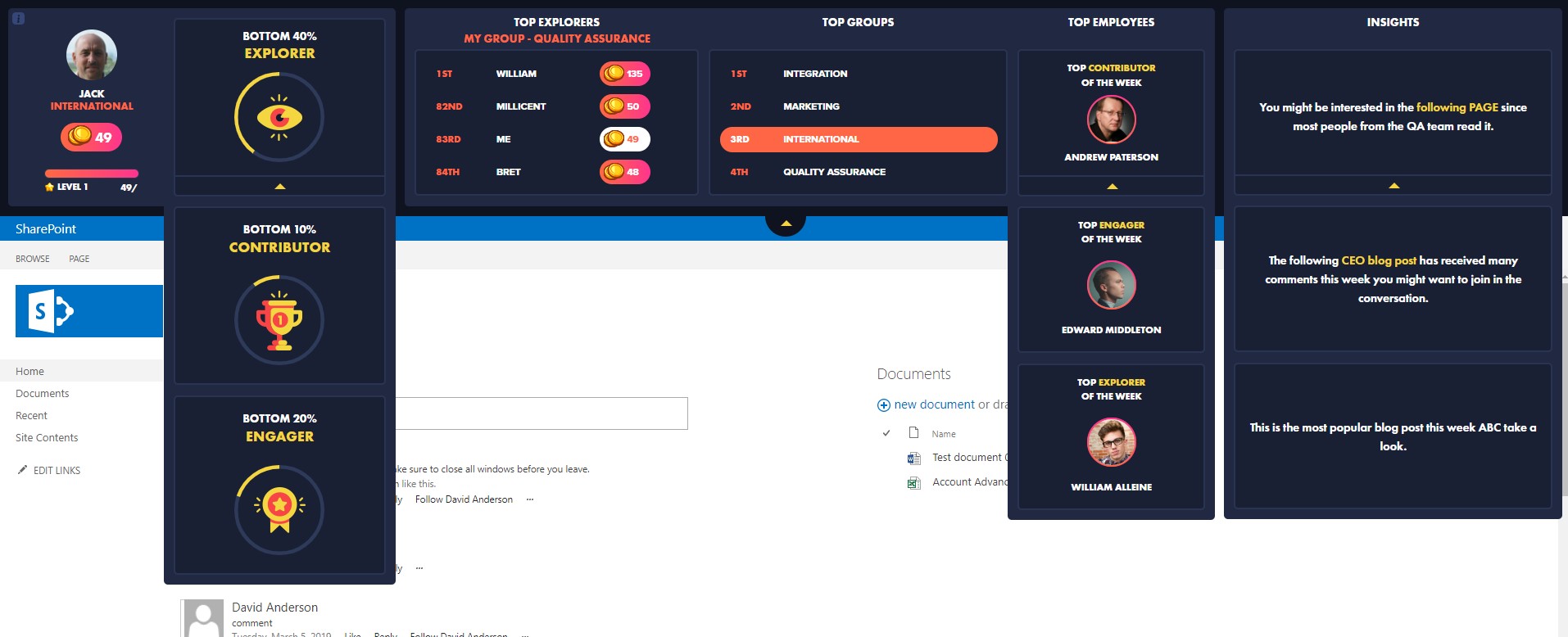Businesses rely on data to make crucial business and management decisions. These decisions become a pillar of success for organizations as they strive to control costs, increase revenue, and improve customer experience. Discover how you can maximize the use of SharePoint AI and data-driven Augmented Analytics to make better business decisions.
Introduction to AI Analytics
Collecting data is part and parcel of any business strategy. You need a reliable tool to analyze and gain insights from this large volume of data so you can make sense of them. Without actionable insights from the data, the data becomes useless and you fail in your quest to maximize this important resource.
Traditional analytics tools have served their purpose, but with the vast amount of data that businesses are currently processing, these traditional tools have proven to have significant shortcomings. As a result, they are no longer relevant in today’s business environment. Nowadays, it is becoming increasingly important to utilize Artificial Intelligence (AI) to access real-time insights that enable you to cope with a fast-paced business landscape.
AI and machine learning combine to transform the way you analyze business data. These tools provide speed and scalability that no human analyst could ever accomplish. This is the reason why more businesses and organizations have embraced AI and machine learning to make informed business decisions.
Analytics is not a new field but advances in the area of AI and machine learning make it possible to accomplish more than what was previously possible. If you choose to integrate SharePoint AI and data-driven analytics into your business processes, you need to integrate fragmented systems to achieve a holistic approach. You need to establish a central data warehouse where data pipelines can be automatically synced to.
Due to the amount of data stored in the central warehouse, companies employ cloud-based storage systems. This type of storage system can be easily managed at scale, allowing you to reduce the costs of operation and IT infrastructure.
The success of the integration of AI analytics relies on the foundation that you’ve built for the system to work. This involves the data sources and business processes. You can either build an in-house team to handle data analytics or you can invest in a pre-built solution such as SharePoint AI.

Vital Elements of Augmented Analytics
Not all AI-powered solutions are the same. Although they might look it, there are several elements involved that can be critical to your success. The best AI tools offer real-time analytics and correlation, even with big data.
Therefore, you need to look at these two features when evaluating AI tools to find the best fit for your organization.
- Real-Time Analytics
The ability to analyze data in real time is critical for businesses to innovate and stay ahead of the competition. This will also save you time since you can address incidents as they happen while also minimizing the risk of the same error in the future.
Another advantage of having real-time analytic insights is the ability to identify opportunities as they arise. This will enable your team to act on those opportunities when they happen in real time, which in turn allows your business to grow at scale.
- Correlation
Correlation is one of the most underrated features that organizations need to look for in an AI analytics tool. A lot of metrics might appear unrelated when you examine them on the surface level, but diving deeper into these metrics provides insight into potential links that could be critical to taking your business to the next level.
On the other hand, correlation analysis will also help you identify the potential root cause of a problem or incident. Identifying the correlation will help prevent similar incidents from happening in the future. It spares you from the unenviable task of going through large amounts of data trying to pinpoint where you’ve gone wrong and what you need to do to improve.

SharePoint AI: Powerful Business Tool
AI-driven analytics is beneficial to businesses and organizations of all sizes. It is a powerful business tool that is a worthy investment. SharePoint AI, in particular, will revolutionize collaboration and compliance for your business.
In a survey conducted by Harvard Business Review (Artificial Intelligence for the Real World), they were able to collate significant data and insights into the use of AI for businesses, especially in terms of data-driven analytics. Rather than being viewed as a tool to replace human intelligence, AI is there as a supporting tool. This tool can process business data at such a rapid pace that the human brain is incapable of doing. The more you understand it, the more you can leverage this tool to propel your business forward.
Going back to the survey conducted by Harvard Business Review, here are some of the benefits that business executives gain with the implementation of AI:
- Enhances features and performance of the business’s products
- Optimizes the business operations
- Frees up time from doing automated tasks to focus on core skills and tasks
- Improves business decision-making process
- Innovates new products
- Optimizes the external business processes
- Seeks out new opportunities and markets
- Eliminates the need to hire more people
- Reduces operational costs
The Future of AI in Business
Whether you like it or not, AI is the future of business. AI and augmented analytics is already proving to be a critical pillar of success for businesses, but their role will only become more important in the years to come.
As technology develops, augmented analytics will make businesses more empowered when making crucial decisions. The data-driven insights will heighten the efficiency of data analysis. It will also streamline the processes used by data analysts and decision-makers when sifting through a large volume of data so that solutions are recommended or actionable steps that can be taken when they matter most.
Time is a critical component in the world of business. Having actionable insights at your fingertips can drive business productivity and transform how you do business in ways that were never thought possible a decade or so ago.
You might also be interested in reading about: How can AI drive collaboration and user adoption of software?













 Follow @cardiolog
Follow @cardiolog 